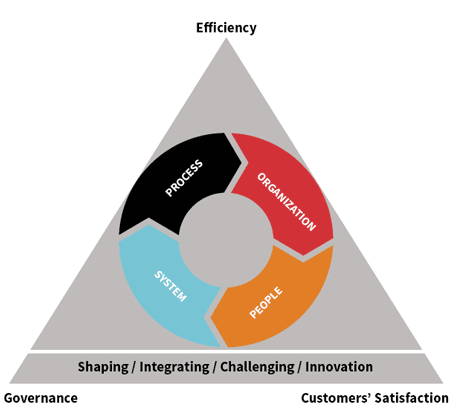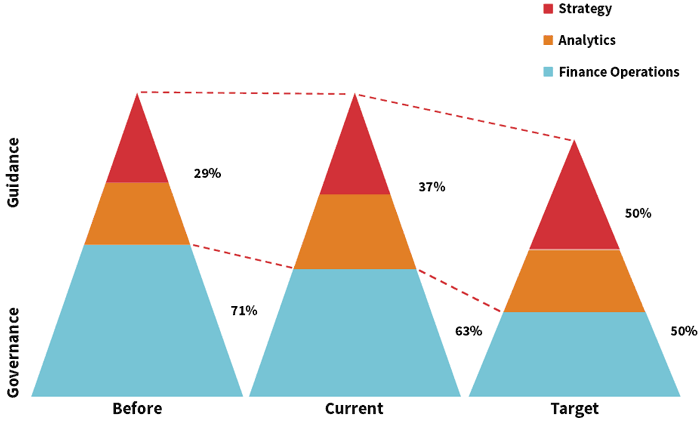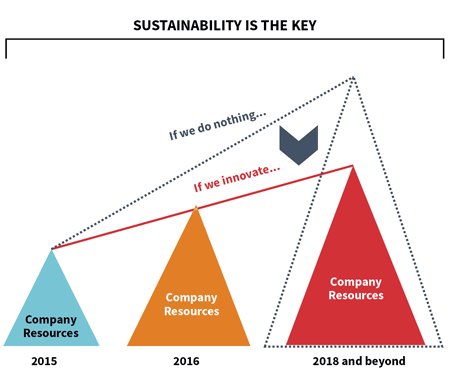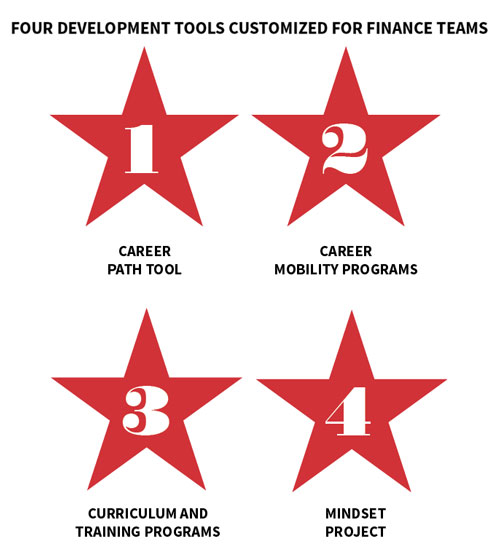The Star
How to take control of your career and performance
December 2016/January 2017I recently attended a team building event at a zoo-themed café in the heart of Shanghai with a group of 20 new employees from the accounting department. My employer, AIA China, hosts these types of events from time to time, and I’ve always found it tremendously rewarding to attend. For my own team, I personally have hosted Formula One, Where’s Waldo? and beach-themed parties. I consider these events a success when team members have fun, let loose and get to know one another better. This is the key to building a successful team with tightknit individuals who trust and rely on one another to win as a team.
One question that came up during this recent team building event was, “What do employees consider a good company or a good boss?” There were many interesting answers, but only one that everyone unanimously agreed on: “One that will develop and grow me.”
Insurance Environment in China
Allow me to backtrack a bit to provide some background on China’s environment. Insurance is a sunrise industry with a top-line of more than 25 percent compound annual growth rate (CAGR) growth in the last decade. Its premium ranking was No. 9 in 2006 but moved up quickly to No. 3 by 2015, behind Japan and the United States. Some projections show that China may overtake the United States as No. 1 in the coming decade. There are 76 life and 80 non-life insurers (a third of which are foreign insurers), with 200 more companies waiting in the wings for licenses. The total assets reached US$2 trillion in 2015 (27 times more than in 2001). The industry only started about 25 years ago. As a young industry in such a fast-growing market, the management focus has been more on sales and market shares, and less on efficiency and other financial management and controls.
As a young industry, our workforce is also young, with an average age just above 30. However, the average distribution in terms of age is representative of a well curve (inverse bell curve), with an exponentially greater number of employees at the beginning and later ends of the spectrum. Historically, we obtained top talent who would stay for a lifetime straight out of universities. However, we now find increasing competition for retaining top talent, as new graduates are interested in fast-paced and high-growth industries, such as internet, big data, entrepreneurship, technology and so forth. These industries have boomed in China, hosting many positions where a background in actuarial science can be applied.
We’ve also noticed a shift in talent retention, where individuals no longer stay for the entirety of their careers due to increasingly abundant opportunities. The combination of this trend, along with the new generation’s need for more meaningful work and opportunities to move faster to the top, has increased the turnover—particularly for staff with four to eight years of experience. If we look at their skill sets, these employees are excellent in execution. It is incredible for me to see a new IFRS, VAT and even a new Solvency II implemented within a few months with really good quality. While the execution was excellent, more coaching on how to approach the implementation strategies was needed.
The Best of Me is Called: Setting the Stage for Career Development
To engage our workforce, we have a formula (of course we do—we’re actuaries!) for how to frame leadership and career development: The Best of Me is Called x The Best of Me is Able to Respond. The key message is that companies will build the stage of opportunities and help grow individuals’ skill sets, but individuals are responsible and empowered for their own careers and development.
The best calling stems from within and comes from our own aspirations and ambitions. We must dare to dream while remaining open-minded and having a willingness to change. Our own aspirations and ambitions also drive the desire to respond as best we can.
However, the role of an employer or manager is crucial in setting up the employee for success. The employer needs to build the stage with the right roles and technology setup before calling upon the individuals to perform. The employers, leaders and employees must ensure their peers and subordinates are empowered to be successful—so they can respond with the best of them. They also should provide development opportunities to upgrade skill sets so employees are prepared to respond when called upon.
But why limit this to individuals? I challenged the finance team to widen the scope to cover not just our head office in Shanghai, but to extend it to all five of our branches in China. As a result, we undertook a multiyear project to establish a finance transformation framework. The first phase of this project was successfully completed last year, incorporating this formula of empowerment at its core, which I believe drove its success.
The Finance Transformation Framework
The finance transformation framework is a comprehensive framework spanning multiple years. When it was first proposed a couple of years ago, my finance teams were definitely not on board. My company had been doing well, and it was difficult to see a need for transformational changes, not to mention the thought leadership and significant implementation efforts this initiative would require. In other words, our teams were content with the status quo and felt no need to “call up the best of me.”
The transformation sits upon three pillars, as shown in Figure 1:
- Deliver shareholder values through transforming our organization, people, systems and processes.
- Balance internal customers’ satisfaction with cost/efficiency and appropriate governance.
- Build an innovative culture where we shape the future, rather than let it happen; challenge accepted practice; and integrate with other functions within the company.
Figure 1: Finance Transformation Network

Deliver Shareholder Values Through Transformation
The finance teams realized that a lot of time and overtime were spent on transactional and reporting work, and too little time was spent on value-added activities to support business strategies. This became a downward spiral, as more and more manual work was piling up due to the company’s fast growth and ever-increasing regulatory requirements. This meant we had less and less time to add any long-term value.
The question then became, “Is this what we want?” Do we want to continue to be buried in busy work and have no say in formulating strategy? After some nudging, the teams decided to “be called upon.” It may seem counterintuitive, but the best companies and managers often lead by calling upon the employees to change, or even to leap beyond their own imaginations!
Balance Internal Customers’ Satisfaction With Cost/Efficiency
The next question asked was, “What is our guiding principle in transforming our finance organization, people, processes and systems?” Many finance functions (and, actually, most backroom functions) consider internal customer satisfaction as the primary measure of value delivered. However, business partner satisfaction is an insufficient measure of value. We must actively manage customer expectations and encourage them to make trade-offs between their wants and needs. Finance teams add value by focusing resources on the greatest opportunities and eliminating low-value services.
Based on these principles, we redesigned the finance organization into two large categories of activities:
- Governance: This consisted of operational activities, such as accounts payable/receivable, expense reimbursement, statutory/GAAP reporting, management reporting, budgeting and so on.
- Guidance: These teams were responsible for strategic and analytical activities, such as profit and loss analysis, business development, pricing strategy, capital management, strategic planning, forecasting, strategic initiatives approval and monitoring, special projects and so on.
This was a large task, as more than 80 percent of the finance teams were affected. The goal was to refocus our activities from the previously heavy-weighted governance model to a more guidance-oriented one. Figure 2 shows where we were a year ago with 71 percent of the team in governance activities, which now has been reduced to 63 percent. Our ultimate goal is to have a 50/50 balance between governance and guidance activities, and to support our business growth with a more effective and smaller team represented by the overall smaller triangle. This will move the skill sets up and make the operational work more meaningful via automation and standardization.
Figure 2: Governance Versus Guidance

Build an Innovative Culture
Sustainable growth is an innovation. This can be accomplished through promoting fast growth and/or optimizing resources, as shown in Figure 3. Innovation and finance teams’ activities seem to be an oxymoron. (When was the last time someone put the two words together?) We tend to think of innovative activities as new, disruptive business models, technological breakthroughs and so on. However, I believe the finance function can have a very unique role in promoting a company’s sustainable growth.
Figure 3: Sustainable Growth is an Innovation


Initially, the finance teams were more focused on system automation and process simplifications in order to reduce current workloads. They felt comfortable calculating results and less so in articulating the underlying drivers, and even less so in shaping results and challenging business strategies upfront. However, once the teams accepted and adopted our Group CFO’s vision of the finance mindset of “shaping, challenging, integrating and innovating,” results skyrocketed.

The Best of Me is Able to Respond
A new stage was set up for the finance teams, which are now fully equipped with new roles and responsibilities, new technology with much more efficient processes, and new systems. But how do we cast the roles? Can one perform at one’s best when called upon? If not, how can one become prepared?
Our own aspirations and ambitions drive our desires to respond. Employers and leaders can help provide support by offering career counseling in order to cast the appropriate roles.
As a key step in the transformation, we performed detailed job evaluations to support the future state. In other words, some job descriptions are not necessarily what we are doing now, but what we intend to do based on the new model. We then coached individual employees to see what they would aspire to do. Some employees prefer operational and transactional aspects where they can interact with internal customers directly. Other employees want to get involved with more strategic projects. These are not set in stone, as we do have rotational programs to support both horizontal and vertical growth. The employees liked to have choices and saw their aspirations were heard and met in this process.
In addition, we created a series of development programs and tools customized for the finance teams.
- Career Path Tool: This sophisticated tool maps out the potential career paths in finance, including actuarial ones. Jobs are divided vertically into families. For example, we have pricing, financial and actuarial systems in the actuarial job. For each grade level, the requirements for that level are laid out, as well as the requirements for advancement to the next level, either within the same job family or to another job family within finance or actuarial. This is extremely useful to employees in understanding the career paths available. It is also useful for managers when having career discussions during the performance appraisal process.
- Career Mobility Programs: As China has a young and fast-growing insurance market, there are a lot of opportunities vertically, horizontally and diagonally. In my company, both the chief sales distribution and chief marketing executives came from actuarial backgrounds. We found most staff are not interested in moving outside of China (to other countries). Therefore, the focus is more on moving between different departments within AIA China.
- Curriculum and Training Programs: We have a series of in-house training programs available to our employees. These range from online courses to self-study to instructor-led classroom seminars. Some are conducted off-site. For example, the monthly CFO development program this year covered the competition, market, internet finance, service leadership, customers’ journeys and more.
- Mindset Project: The most long-term and challenging part is to change the culture and mindset. Project H2O takes its inspiration from a hero of the Hong Kong cinema, martial arts master Bruce Lee, who famously challenged us to “be like water.” Water can shape itself to any form. Project H2O’s aim is to bring about further cultural change within the organization by being collaborative, challenging the status quo, encouraging employee empowerment and delivering sustainable, quality results.

As this was a large-scale transformation, we monitored the employees’ feedback and the internal customers’ satisfaction very closely. On the internal customers’ satisfaction, we conducted a survey when the transformation was put in place last year—the satisfaction score was just above 60. The internal customers were not used to receiving standardized services remotely from a centralized center. However, this score has significantly improved to 85 with our recent survey. This shows the internal customers now realize the benefits from the transformation, such as significantly reduced turnaround time and higher quality services.
As 80 percent of finance employees were affected, we saw a dip in the Gallup employee survey when this was implemented last year. We just conducted another survey. The results are not out yet, but I expect a much higher score based on the feedback I have heard over the last six months. In general, employees feel better about their futures and understand their career paths.
While these programs can foster development and capability building, the main component of support must stem from the desire within. Individuals must actively seek out opportunities to advance themselves. These opportunities are not limited to work, but also can be achieved through volunteering, community activities and charities.
Now, the curtain is being drawn and you are called to perform. You are in control of your own career and performance. You are the star—break a leg!
Copyright © 2016 by the Society of Actuaries, Chicago, Illinois.

